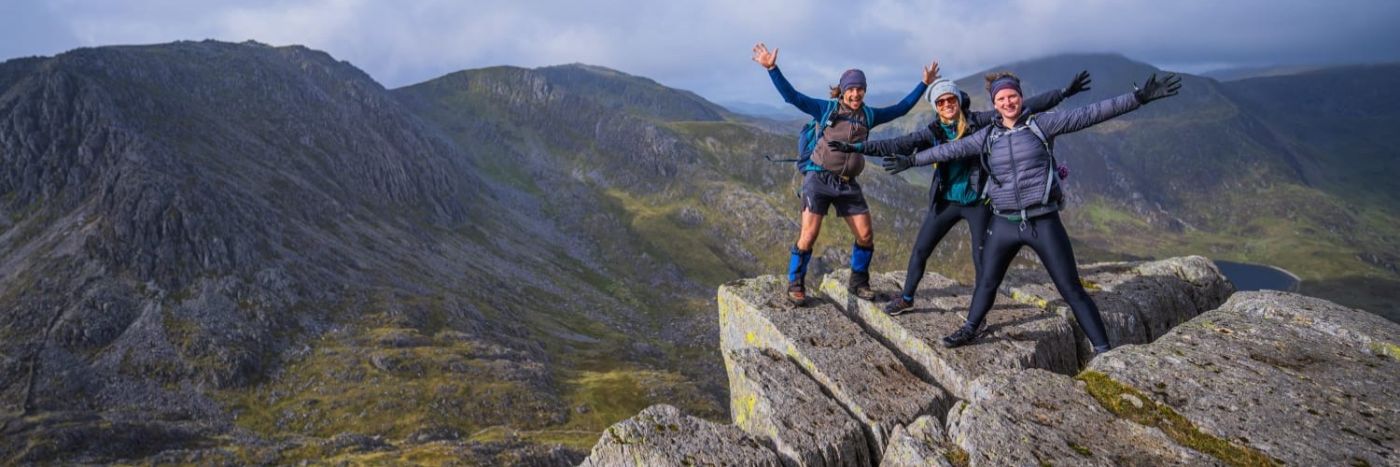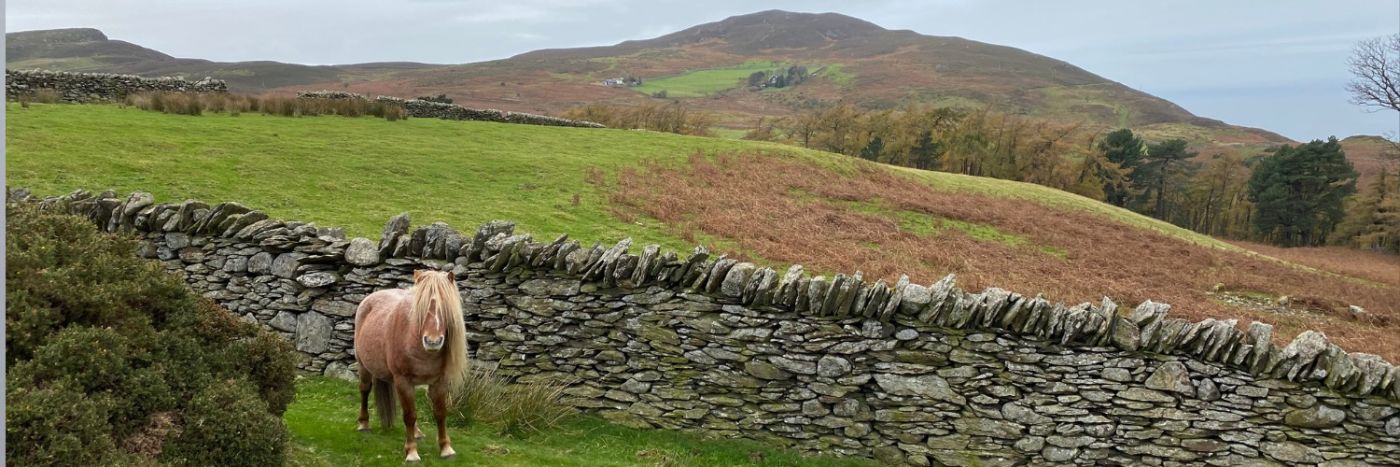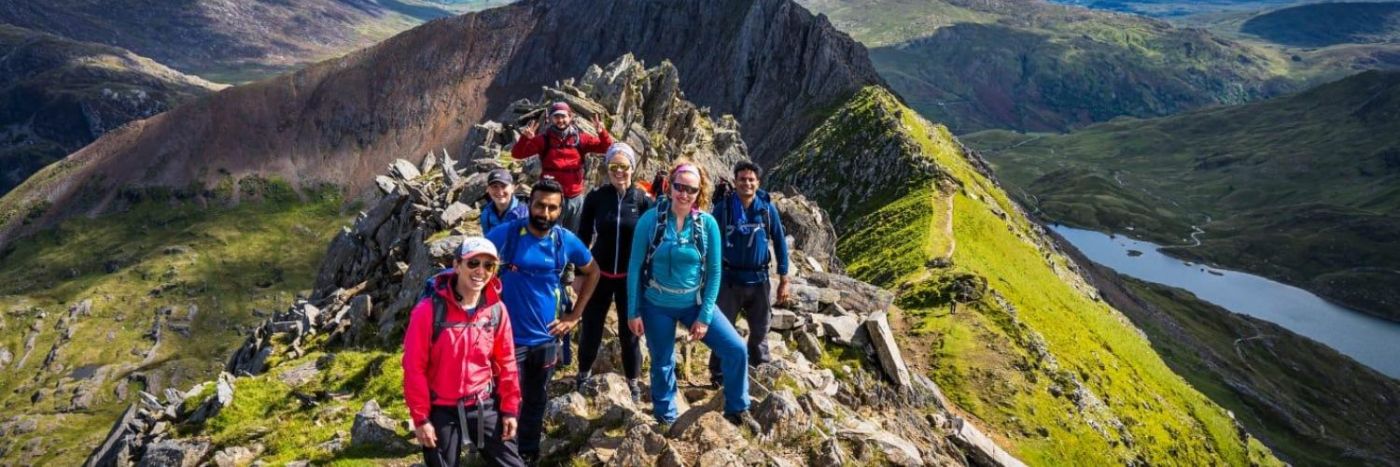
A Complete Guide To The Welsh 3000s / Welsh 15 Peaks Challenge
Embark on an extraordinary journey as we delve into the breathtaking Welsh 3000s challenge. This ultimate test of endurance and mental fortitude beckons thrill-seekers and adventurers from around the globe.
In this comprehensive guide, we will navigate the remarkable landscape of the Welsh 3000s, providing expert advice on how to safely complete the challenge.
What are the Welsh 3000s?
The Welsh 3000s are a series of mountains in North Wales with a height of 3000ft (914 meters) or more. There are 15 peaks (16 if you include the re-measured Castell y Gwynt!) over 3000ft and they are spread over 3 mountain ranges in Eryri (Snowdonia) National Park.
The mountain ranges of the Welsh 3000s are the Yr Wyddfa/Snowdon Massif, the Glyderau and the Carneddau. The ranges are separated by adjoining valleys allowing all mountains to be walked in succession.
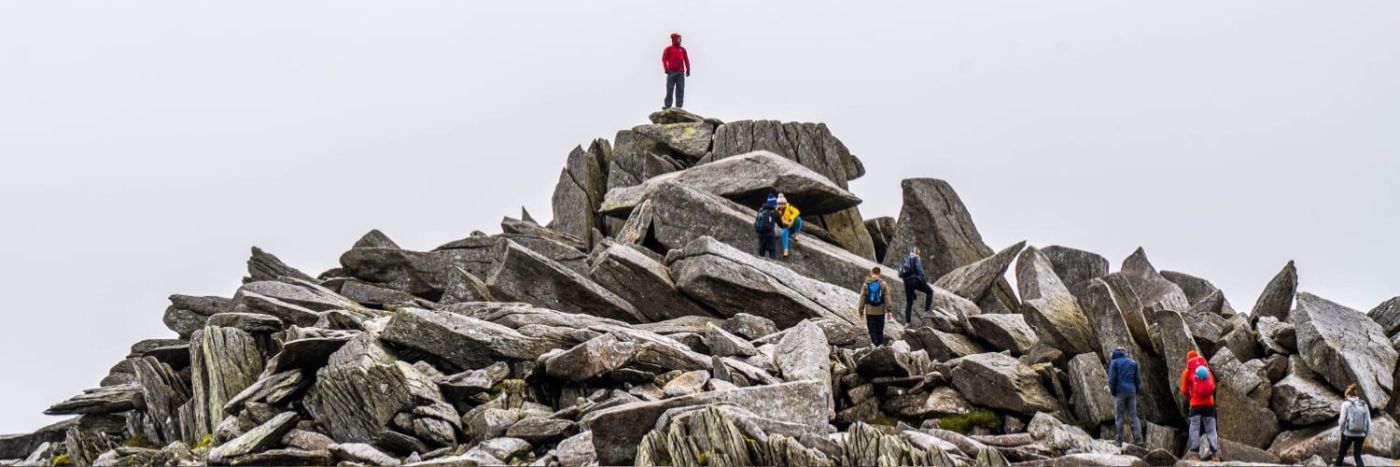
What is the Welsh 3000s Challenge?
Also known as the 14 Peaks Challenge or the 15 Peaks Challenge, the Welsh 3000s Challenge refers to an iconic walking route whereby hikers aim to summit all Welsh 3000 peaks in under 24 hours. The first recorded completion of the route dates back to the early 1900s and the current record is held by Finlay Wild, who competed the challenge in 4 hours 10 minutes in 2019.
The challenge officially begins on the summit of Yr Wyddfa and finishes upon reaching the final summit of Foel Fras. Those attempting the challenge in 24 hours will typically hike to the top of Yr Wyddfa the night before and camp near the summit. If completing the challenge in 24 hours, the distance covered is 42km (26 miles), with around 3100m in elevation gain.
However, it’s also very common to tackle the Welsh 3000s route over several days. Unless you enjoy running up mountains and across ridge lines, it’s arguably more fun to take things a little slower so you can soak in the incredible views. Three days to complete the challenge is ideal since the route is naturally divided into three sections, those being the three mountain ranges.
When completing the Welsh 15 Peaks over several days, including the ascent to the first peak and descent from the last peak, the distance is around 50km with close to 4000m in elevation gain. This is a mountain challenge of epic proportions with incredible views throughout!
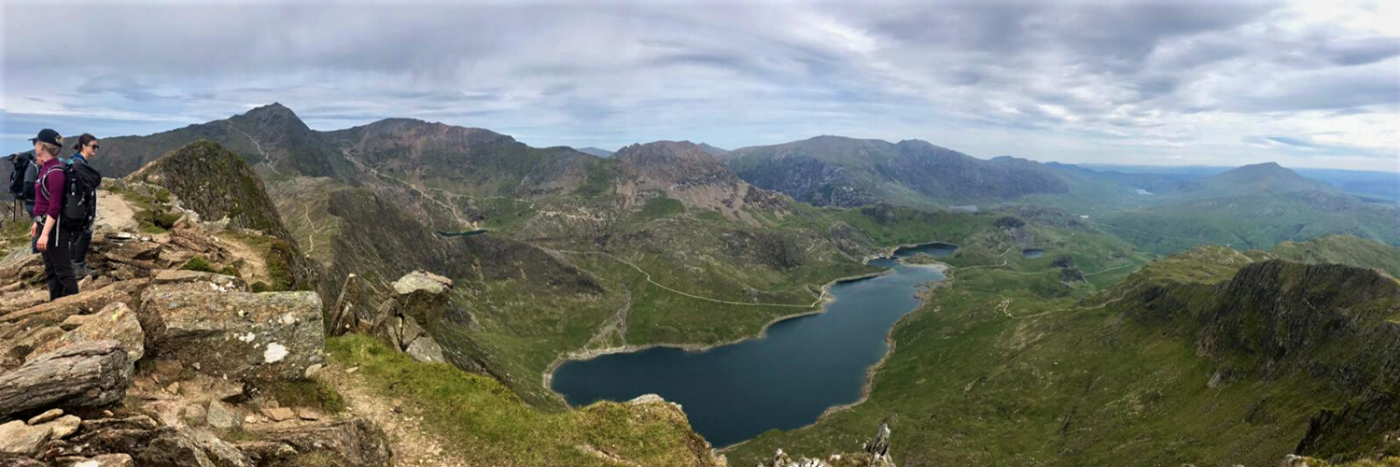
The Welsh 3000s Route
To make a bid for the official 15 Peaks record, the route must begin on Yr Wyddfa and run from South to North. There are benefits to completing the route in this direction, namely it means you are completing the most technical section of Crib Goch on fresh legs, rather than on tired legs.
However, this is also the biggest drawback on tackling the route in this direction. For those inexperienced with scrambling or ridge walking, it means the first peaks of the day are along the knife edge arête of Crib Goch, which can be nerve wracking and a little overwhelming.
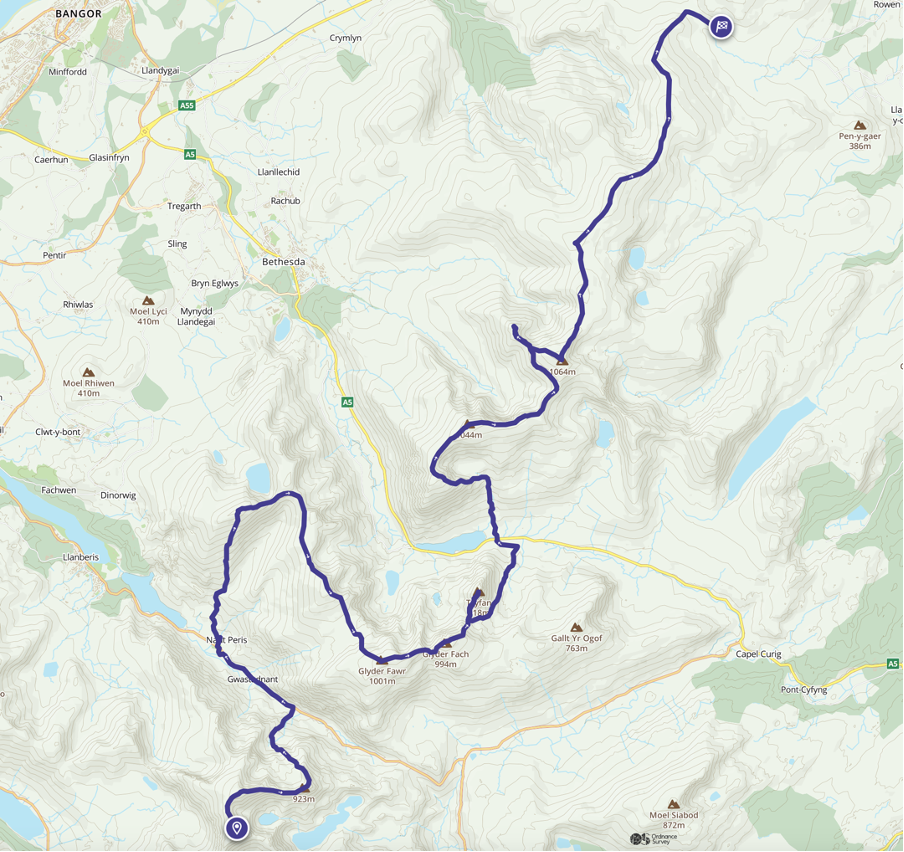
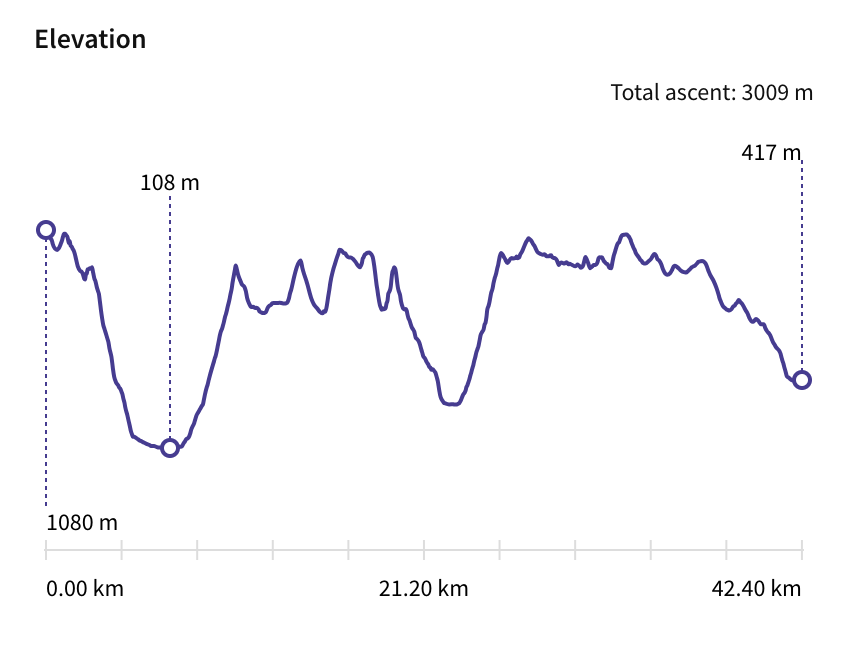
A multi-day Welsh 15 Peaks Challenge is more suited to running from North to South. This is the route we prefer to use when running our guided trips and which we will outline below.
North to South Route Plan Over 3 Days
Day 1: The Carneddau (7 Peaks)
Some big mountains and big distances but nothing too technical. Plus keep your eye out for wild Carneddau ponies.
The ponies roam free throughout the year over the 200 square kilometres of the Carneddau mountains and plateau. It’s the highest contiguous area of high ground in Wales and England, with 7 peaks that rise over 3000 feet (914metres) above sea level. It makes up roughly 10% of Snowdonia National Park.
Foel Fras 3090ft (942mts)
The first peak of the Welsh 3000s Challenge is a broad grassy peak at the northern end of the Carneddau range. It’s the first of severn peaks traversed on the long ridge of the Carneddau, offering views over Anglesey and beyond.
Carnedd Gwenllian (Garnedd Uchaf) 3038ft (926mts)
Carnedd Gwenllian wasn’t always included on the Welsh 3000s since is appears as a lower sub-peak between Foel Fras and Foel Grach. This is why the challenge is sometimes known as the 14 Peaks rather than the 15 Peaks. However, it is a mountain over 3000ft so is rightfully included on the challenge. The peak was renamed in 2009 to Gwenllian, who is the daughter of Prince Llewelyn (see more about this later).
Foel Grach 3202ft (976mts)
The third peak along the ridge is the rocky summit of Foel Grach. At this point you will feel like you’re in the middle of nowhere, although there is a stone shelter just off the summit which offers refuge in bad weather.
Carnedd Llewelyn 3490ft (1064mts)
Welcome to the highest peak of the day and the third highest mountain in Wales! Meaning Llewelyn’s Cairn, it’s likely named after Llywelyn ap Gruffudd who was the last Prince of Wales.
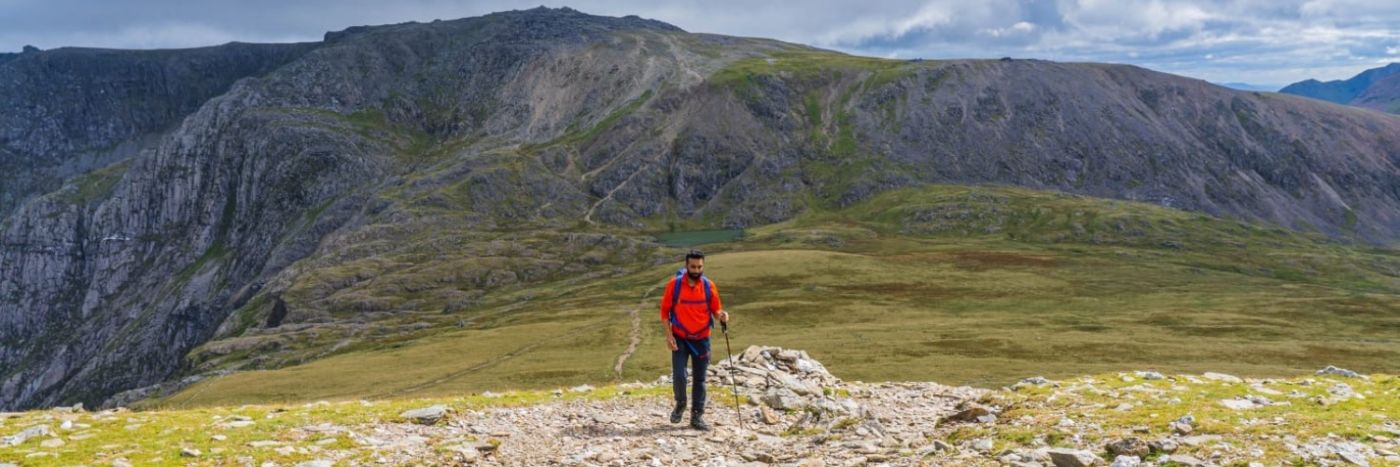
Yr Elen 3156ft (962mts)
Yr Elen is a spur out from the main ridge and involves a fairly steep down and up to reach the summit. However, views down to the mountain lake below are worth the effort of the out and back detour.
Carnedd Dafydd 3425ft (1044mts)
Dafydd was brother to Llewelyn and his mountain marks the next summit in the range. The ridge traverse from Llewelyn to Dafydd is one to be savoured, with views that open up to mountains in all directions once at the top.
Pen Yr Ole Wen 3208 (979mts)
The last mountain of the day is the pyramidal peak of Pen Yr Ole Wen. This mountain provides amazing views over the Ogwen valley, along with a good glimpse at the Glyderau range that will be tackled on day two.
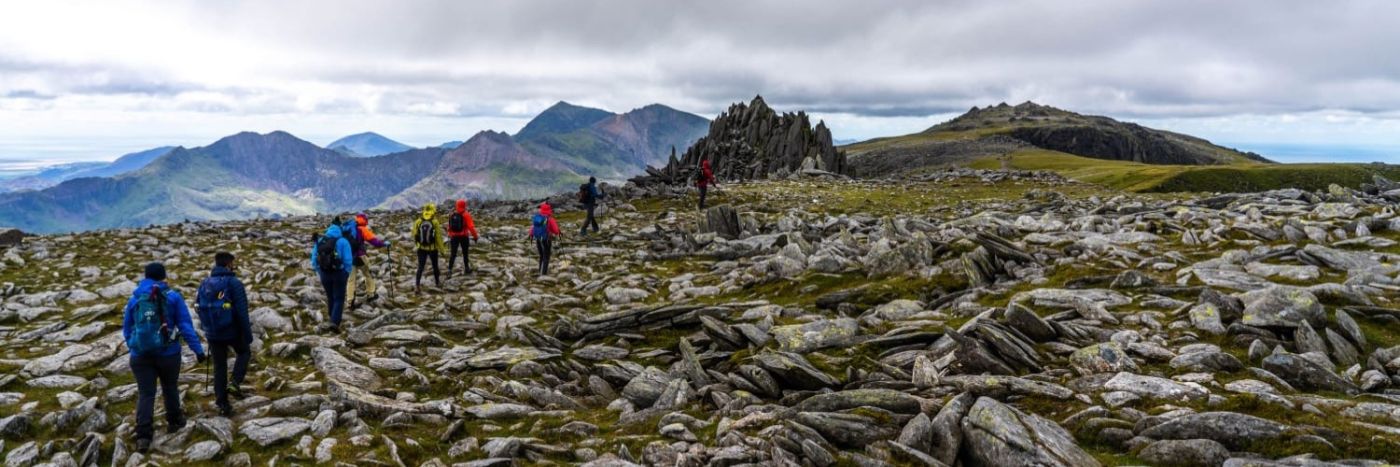
Day 2: The Glyderau (5 Peaks)
A lot of ascent and descent with some technical scrambling and loose scree. However, you’ll soon be distracted as you reach new heights and feel as though you’re stepping amid a scene from of Lord of the Rings or House of the Dragon which is currently been filmed in Snowdonia.
Tyfan 3011ft (917mts)
The mighty Tryfan is a rocky mountain that requires an element of scrambling to get to the top. There are several routes to tame this beast depending on experience. Those brave enough may even attempt to jump between Adam & Eve standing stones located on the summit.
Glyder Fach 3261ft (994mts)
It’s a steep scree run to climb to the top of Glyder Fach but the views of Yr Wyddfa from the summit are hard to beat. Be sure to stop off for a photo on the incredulously perched Cantilever Stone along the way.
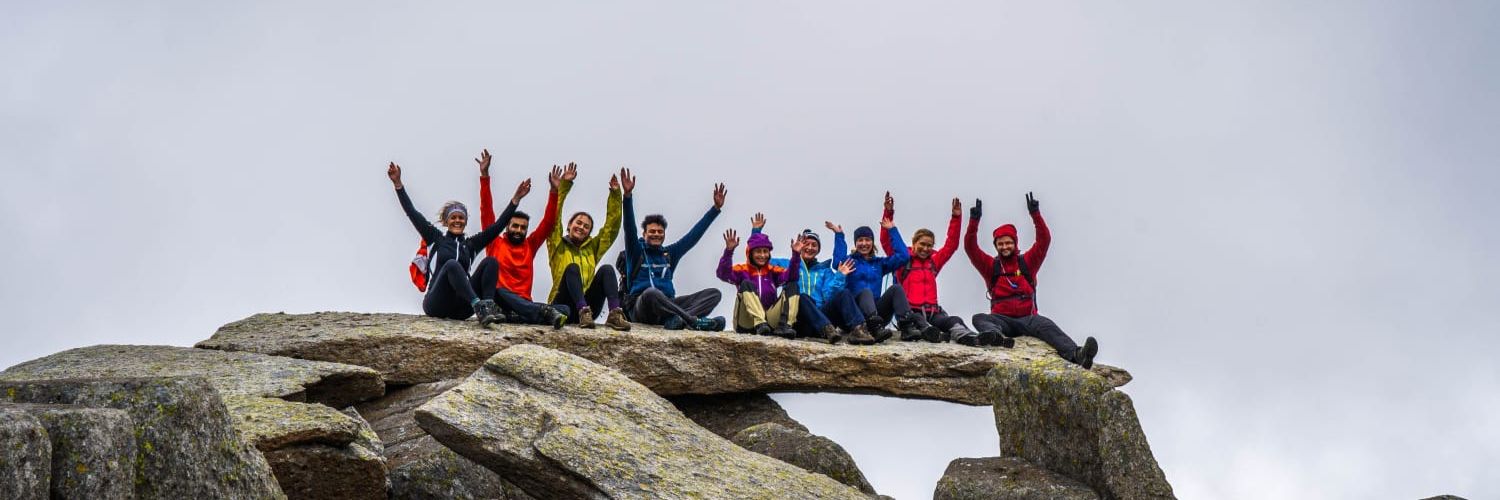
Glyder Fawr 3284ft (1001mts)
This is the highest peak of the day and it’s easy to see why the Welsh name translates to big pile of rocks! Between the peaks of Glyder Fach and Glyder Fawr is the fascinating rock feature of Castell y Gwynt. This summit was remeasured in 2007 and upgraded to a Nutall (a classification of mountains), with a height of 3189ft. However, it’s not included on the Welsh 3000s challenge.
Y Garn 3107ft (947mts)
After the rocky and technical ascents of Tryfan and Glyder Fach, the walk up Y Garn is much more straightforward and easier underfoot. From the top there is an incredible view over the length of Ogwen Valley.
Elidir Fawr 3284ft (924mts)
The wide sweeping walk from Y Garn to Elidir Fawr follows a grassy path that is kind to tired legs. Elidir Fawr is the most westerly mountain in the Glyderau range and offers views over the town of Llanberis and its huge quarry system.
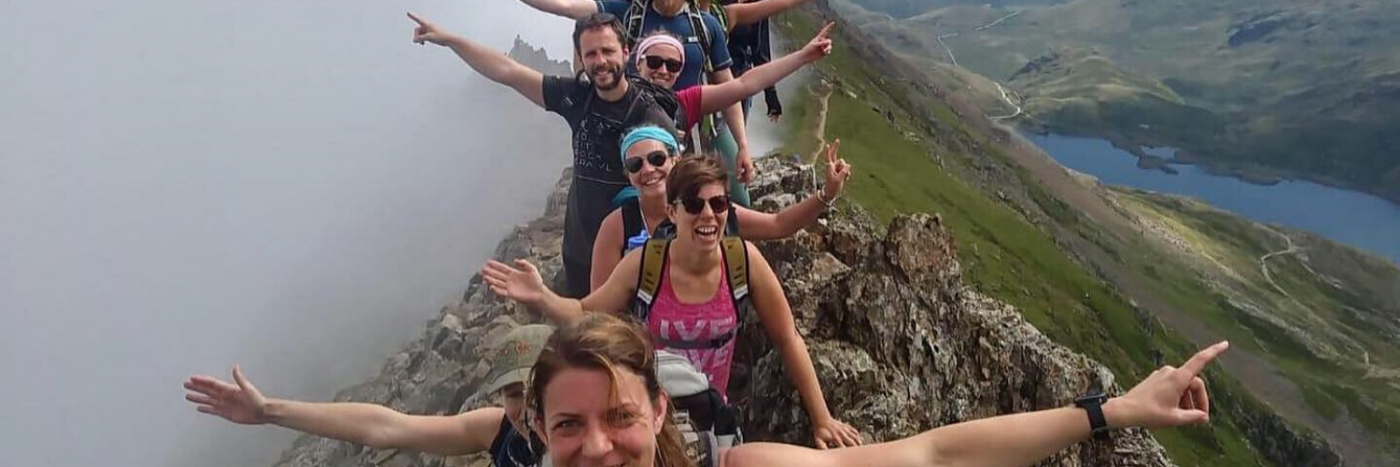
Day 3: The Snowdon Massif (3 Peaks)
Scrambles and exposed ridges culminating at the summit of Wales’ highest peak.
Crib Coch 3028ft (921mts)
A technical grade 1 scramble to the summit followed by a nail-biting walk along the knife-edge arête. This is a serious mountain and should only be attempted with favourable weather conditions. A head for heights is required to walk this ridge.
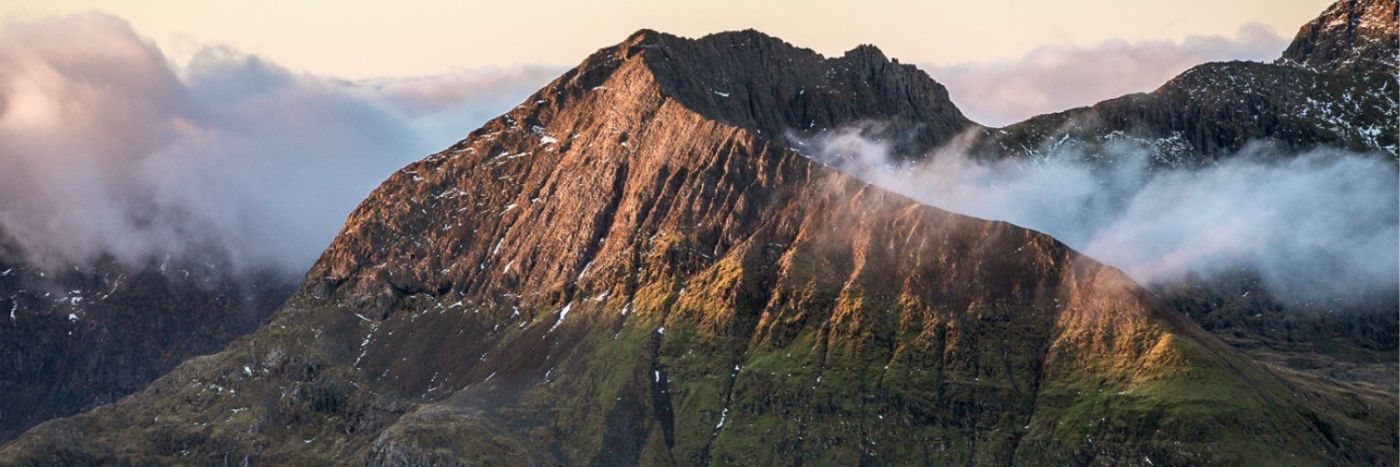
Crib y Ddysgl (Garnedd Ugain) 3494ft (1065mts)
Despite being the second highest mountain in Wales, this peak is often forgotten and seen merely as the highest point at the end of Crib Goch arête. However, there is a trig point on the summit to mark its importance, along with the best full view of Yr Wyddfa.
Yr Wyddfa (Snowdon) 3559ft (1085mts)
Just a short down and up from Crib y Ddysgl and you’ll be at the top of Yr Wyddfa. The highest mountain in England and Wales and the final peak on the Welsh 3000s Challenge. Bag yourself that well-earned summit selfie before engaging the legs for one last descent. A job well done!
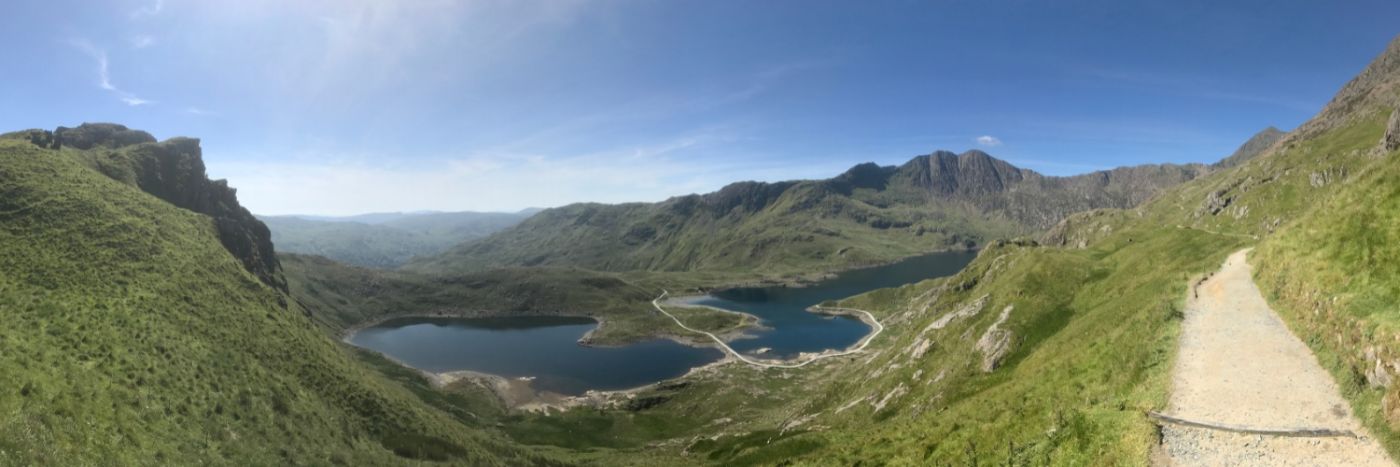
Should I do the Welsh 3000s With a Local Company?
If you are confident and competent in the mountains then it’s possible to make a solo attempt on the Welsh 3000s. However, there are many benefits to doing the Welsh 3000s with a local company rather than attempting to do it alone.
Logistics
As the route is linear, you will need two cars parked at either end of the route if completing the challenge in one go, or at either end of each section if completing it over multiple days. Public transport to the start/finish points is not straightforward and can prove very expensive if taxis are required.
However, if you book onto our Welsh 15 Peaks Challenge we will transport you to the start of each section every morning and collect you once you’ve finished.
Group support
Embarking on the Welsh 3000’s with a group can be a more rewarding and enjoyable experience. Join like-minded people to help push through the difficult moments and collectively rejoice in the high points.
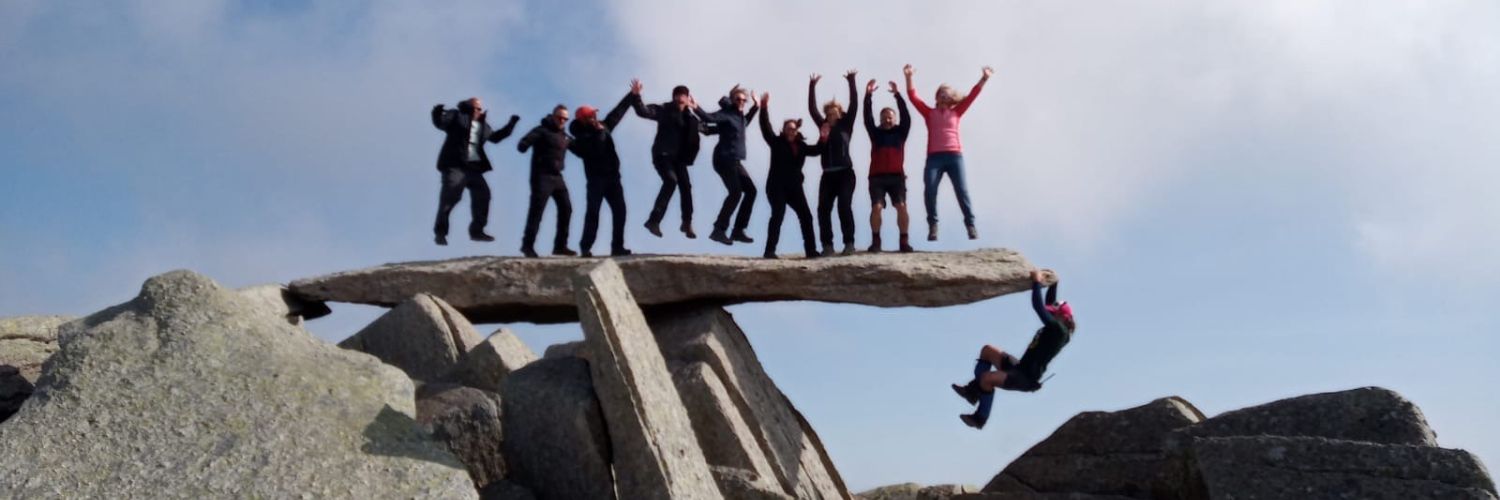
Mountain Leaders
If completing the Welsh 3000’s with Adventurous Ewe you will be accompanied by our experienced local Mountain Leaders who have received bespoke safety training for Crib Goch.
They will take the hassle out of navigation so that you can simply focus on enjoying the views. They will also share information on mountain flora, fauna and geology, tell stories of local myths and legends and offer tactics to improve map reading skills and compass work.
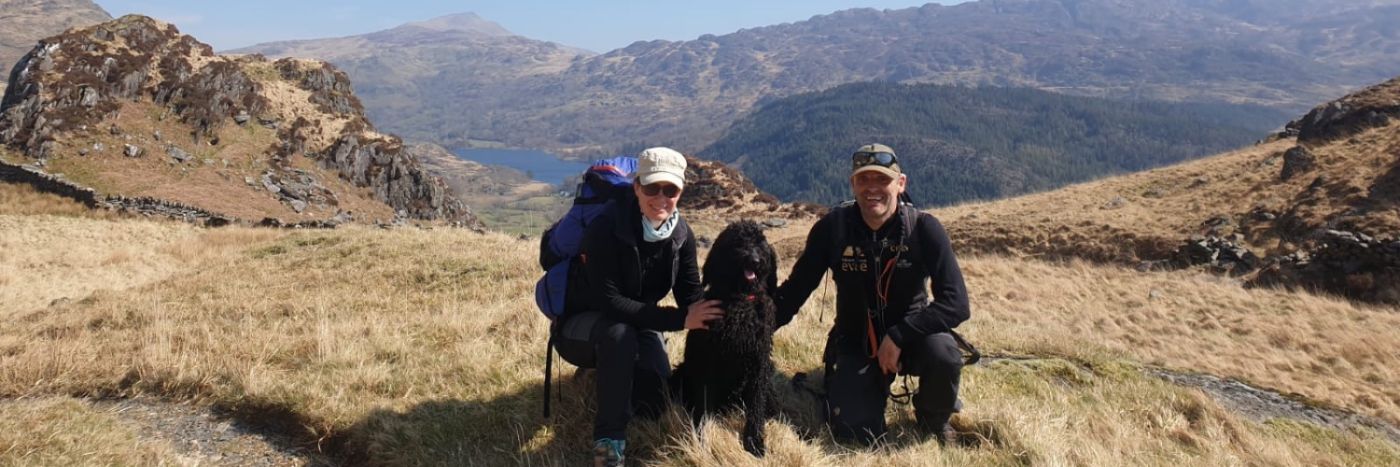
Sustainably sourced meals
Where possible, the lunches provided on our Welsh 15 Peaks Challenge trips are home-made by local providers using locally sourced ingredients, without the use of plastic packaging. This is part of our commitment to running ethical and sustainable trips.
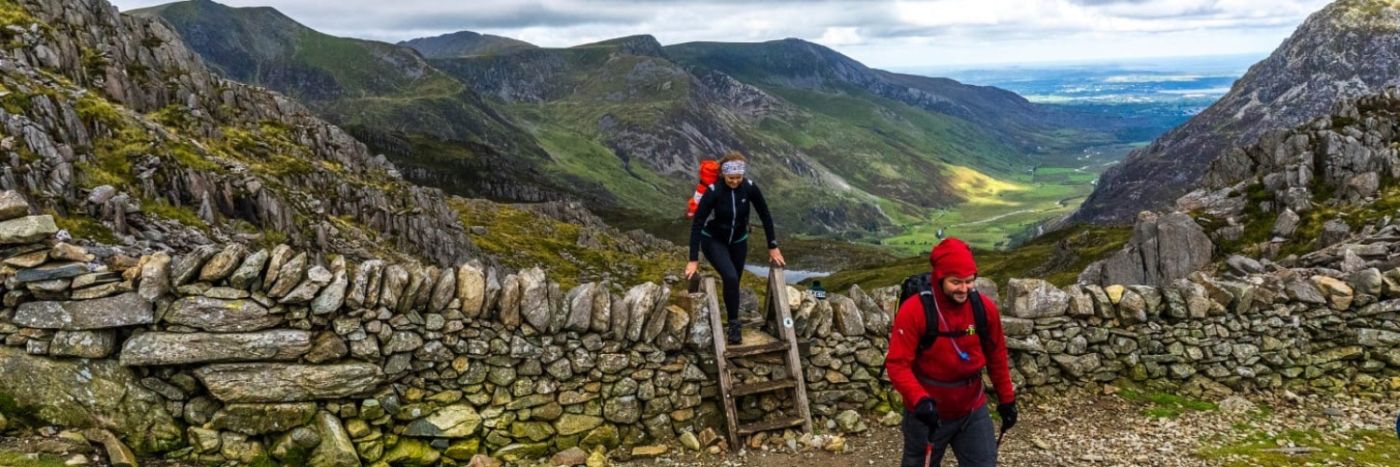
Welsh 3000s FAQs
How fit do I need to be?
A good level of physical fitness is required to complete the Welsh 3000s. Prior experience of walking 8 hour days in the mountains will ensure you have the fitness and stamina required to complete the challenge.
How difficult is the Welsh 3000s?
Difficult! The Welsh 3000s is a challenge of endurance that should not be underestimated. However, with adequate preparation it is achievable for most people.
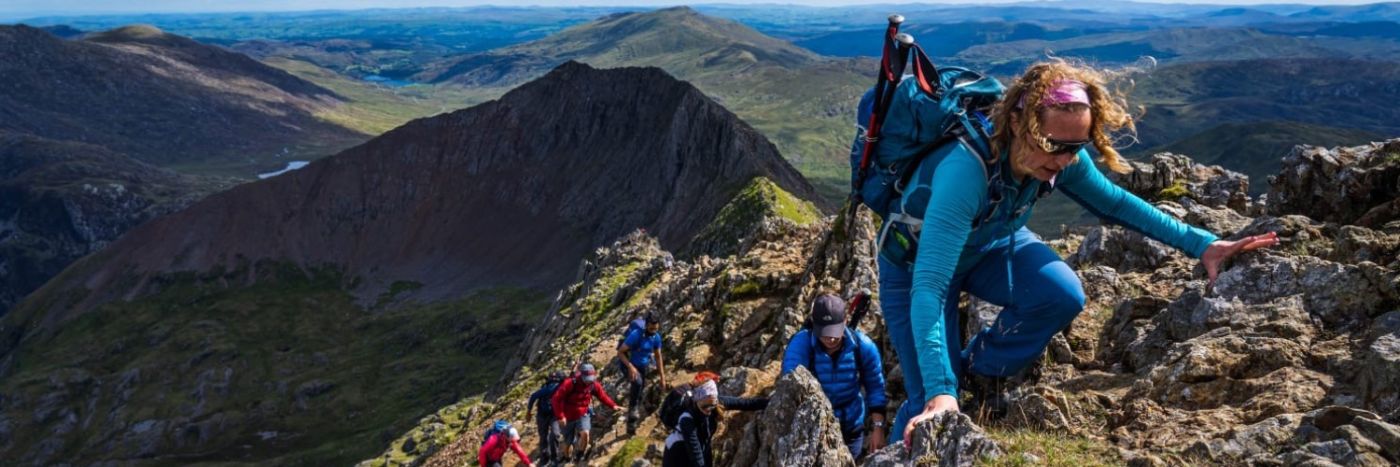
What time of year is best to complete the 15 Peaks Challenge?
The longer days of June offer the best month to complete the Welsh 3000s, particularly if you want to tackle the peaks in under 24 hours. Lots of daylight hours, along with typically fairer weather provide the optimal conditions for completing the challenge.
However, anytime between the months of May to September will offer the best chance to have good weather and enjoyable conditions for a multi-day attempt on the Welsh 3000s.
What equipment do I need?
- Sturdy hiking boots with ankle support
- Waterproof and breathable clothing
- Sunscreen and hat
- Backpack with sufficient capacity
- Map, compass, and GPS device
- Adequate food and hydration supplies
- First aid kit
- Emergency whistle and headlamp
- Mobile phone and portable charger
Note: If hiking the Welsh 3000s with a company then your Mountain Leader will carry many of these items on your behalf.
Is the Welsh 3000s harder than the National 3 Peaks challenge?
Yes! The National 3 peaks involves a lot of travelling between the mountains which makes the challenge very tiring, however there are only three mountains to summit. The ascent and descent of the Welsh 15 Peaks is much more challenging on leg muscles and aerobic fitness.
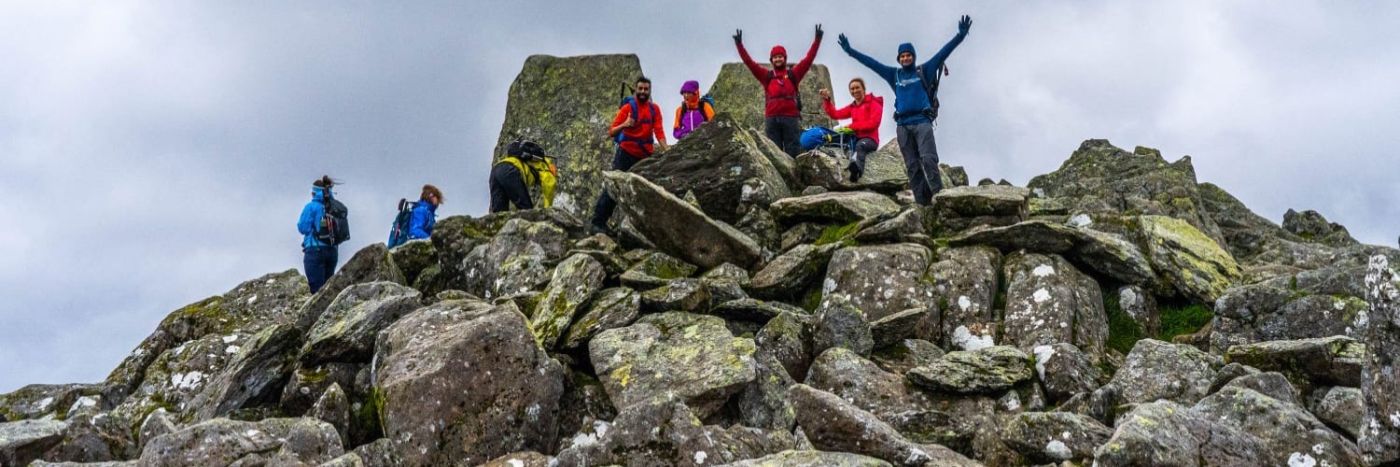
The Welsh 3000s / 15 Peaks Summary
Embarking on the Welsh 3000s Challenge is a thrilling adventure that promises stunning views and a huge sense of accomplishment. The challenge climbs 15 peaks across 3 mountain ranges, providing exciting scrambles and breath taking ridge walking along the way.
Organising the Welsh 15 Peaks can be a logistical nightmare and there are multiple benefits to using a local company to guide you along the route. Whether you choose to embark on this journey solo or with a local company, remember to savour every moment and respect the beauty of Eryri National Park.
Written by Lou France, our Adventurous Ewe Mountain Leader
